travel Philippines :
Why Ethical Wildlife Tourism Matters in the Philippines
The Philippines’ marine biodiversity depends on responsible tourism practices
The Philippines hosts over 52,000 described species, with more than half found nowhere else on Earth. This remarkable biodiversity faces mounting threats from habitat loss, climate change, and unfortunately, irresponsible tourism. When practiced ethically, wildlife tourism can actually become a powerful conservation tool.
Sustainable travel in the Philippines isn’t just a trendy concept—it’s essential for preserving the country’s natural heritage. When tourists choose ethical wildlife encounters, they create economic incentives for conservation rather than exploitation. Local communities benefit from protecting rather than harvesting wildlife, creating a positive cycle that supports both people and animals.
Did you know? Tourism accounts for approximately 12.7% of the Philippines’ GDP, with nature-based activities being a significant draw for international visitors. This economic influence gives travelers tremendous power to shape conservation outcomes.
By understanding the importance of ethical interactions, you contribute to a tourism model that values conservation over exploitation. Your choices directly impact whether wildlife tourism becomes part of the solution or adds to existing problems facing Philippine ecosystems.
Essential Guidelines for Ethical Wildlife Interactions
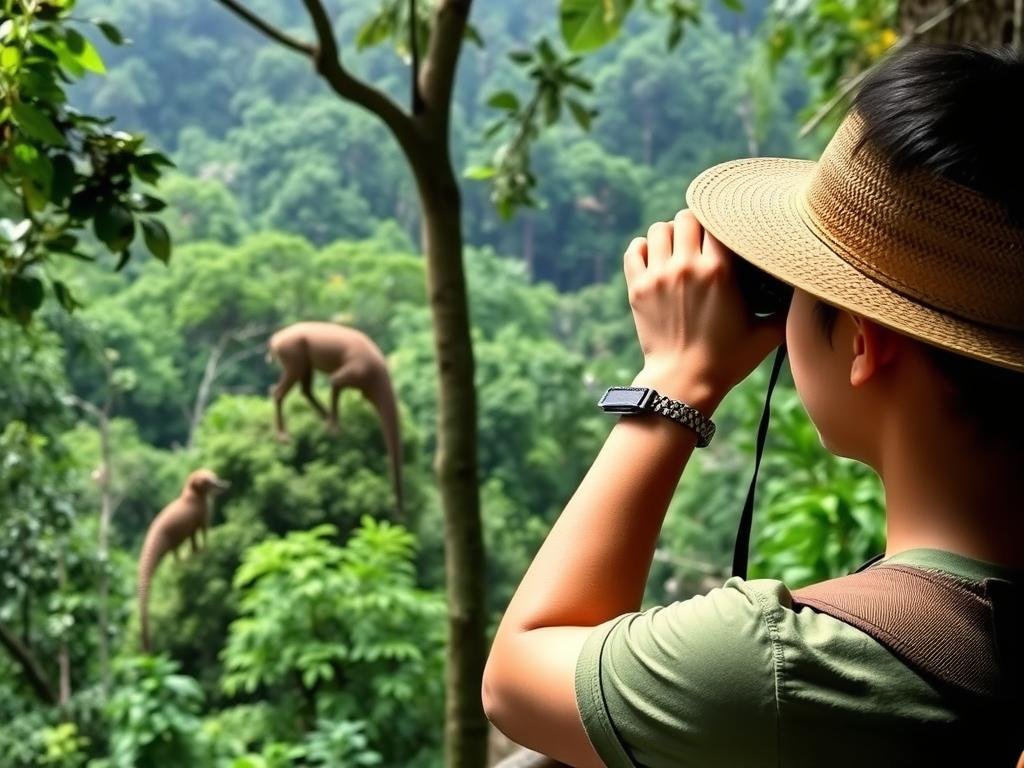
Maintaining proper distance is crucial for ethical wildlife observation
Following these guidelines ensures your wildlife encounters remain ethical and supportive of conservation efforts. These principles apply whether you’re diving with whale sharks or spotting tarsiers in their natural habitat.
Do’s for Ethical Wildlife Encounters
- Maintain appropriate distance (at least 3-5 meters for most species)
- Observe animals in their natural habitats rather than captive settings
- Use binoculars or zoom lenses for closer views without disturbance
- Support conservation-focused tour operators with trained guides
- Learn about the species before your encounter to understand their needs
- Speak quietly and move slowly around wildlife
- Report unethical practices to local authorities or conservation groups
Don’ts for Ethical Wildlife Encounters
- Never feed wild animals—it alters natural behaviors and can cause harm
- Avoid touching, riding, or holding wildlife for photos or any reason
- Don’t use flash photography, especially with nocturnal species
- Never chase, corner, or crowd animals for better viewing
- Don’t support attractions offering unnatural wildlife interactions
- Avoid making loud noises or sudden movements near wildlife
- Don’t purchase souvenirs made from wildlife products
CLAYGO Principle: “Clean As You Go” is a fundamental practice in sustainable travel. Always take your trash with you and consider collecting any litter you find along the way. This simple act prevents wildlife from ingesting or becoming entangled in human waste.
Remember that even well-intentioned interactions can cause stress to animals. Wildlife viewing should always prioritize the animal’s welfare over the visitor’s experience or photo opportunities. By following these guidelines, you help ensure that wildlife tourism becomes a conservation asset rather than another threat.
Ready to plan your ethical wildlife adventure?
Discover our curated list of eco-friendly destinations in the Philippines that prioritize wildlife conservation and ethical encounters.
Top Philippine Destinations for Ethical Wildlife Encounters
The Philippines offers numerous opportunities to witness wildlife in their natural habitats while supporting conservation efforts. Here are five destinations that combine unforgettable wildlife experiences with strong ethical practices:
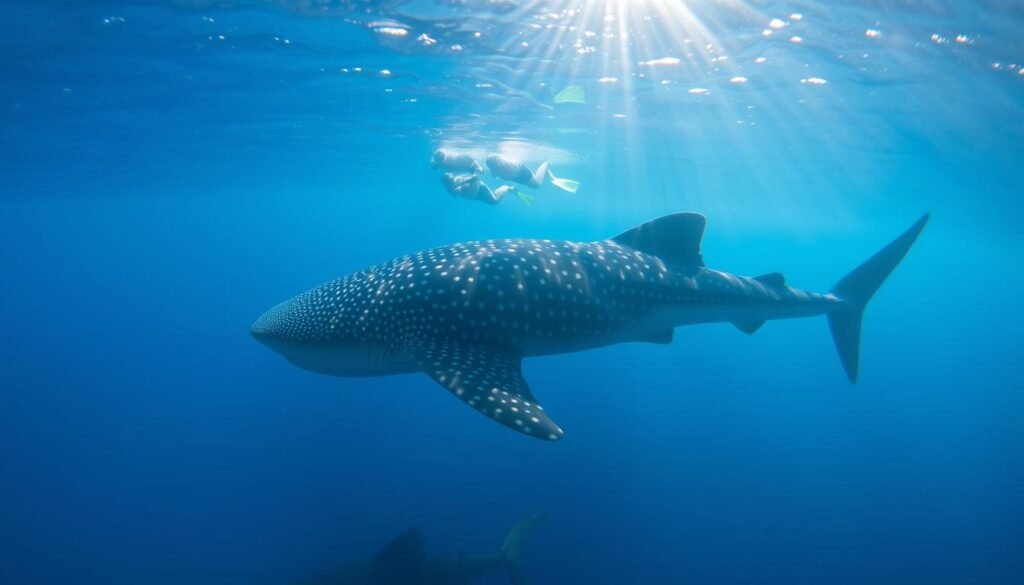
1. Donsol, Sorsogon: Whale Shark Interactions
Unlike other locations where feeding attracts whale sharks, Donsol offers encounters with these gentle giants in their natural feeding grounds. The Butanding Interaction Officers (BIOs) enforce strict guidelines to protect both visitors and sharks.
Ethical Practices:
- No feeding of whale sharks
- Limited number of swimmers per shark
- Minimum distance requirements (3 meters from the head, 4 meters from the tail)
- No touching or riding the sharks
- No flash photography
The best time to visit is between November and June, with peak sightings from February to April. Proceeds from tourism directly support local conservation initiatives and community development.
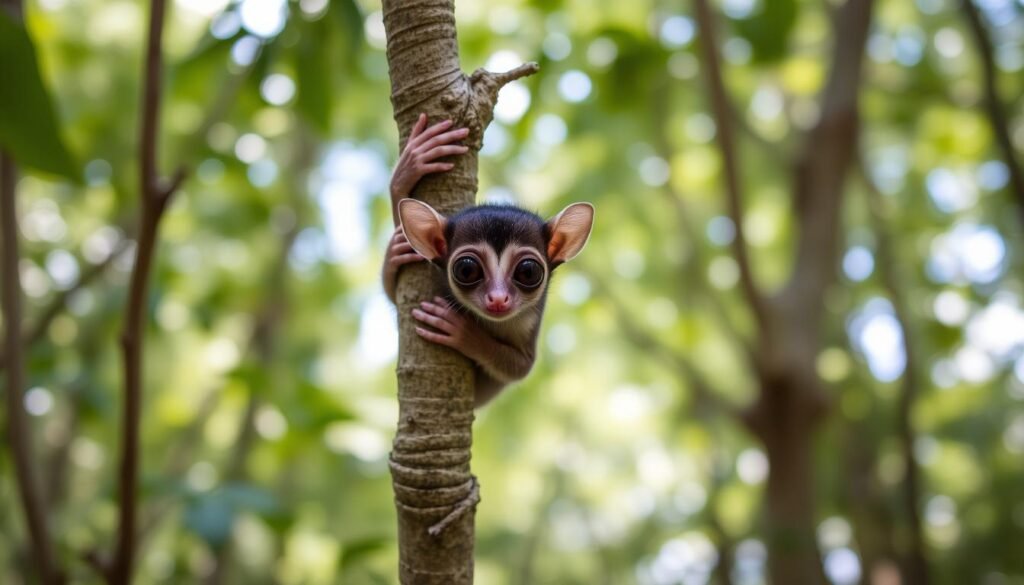
2. Bohol: Philippine Tarsier Sanctuary
The Philippine Tarsier Sanctuary in Corella, Bohol, provides a protected habitat for one of the world’s smallest primates. Unlike other facilities that keep tarsiers in cages or allow handling, this sanctuary prioritizes the welfare of these sensitive creatures.
Ethical Practices:
- Tarsiers roam freely in a natural forest setting
- Strict no-touching, no-flash photography policies
- Visitors must maintain silence (tarsiers are easily stressed by noise)
- Limited group sizes with knowledgeable guides
- Research and conservation programs supported by tourism
The sanctuary is operated by the Philippine Tarsier Foundation, which conducts research and conservation efforts to protect this endangered species. Your visit directly supports these initiatives.
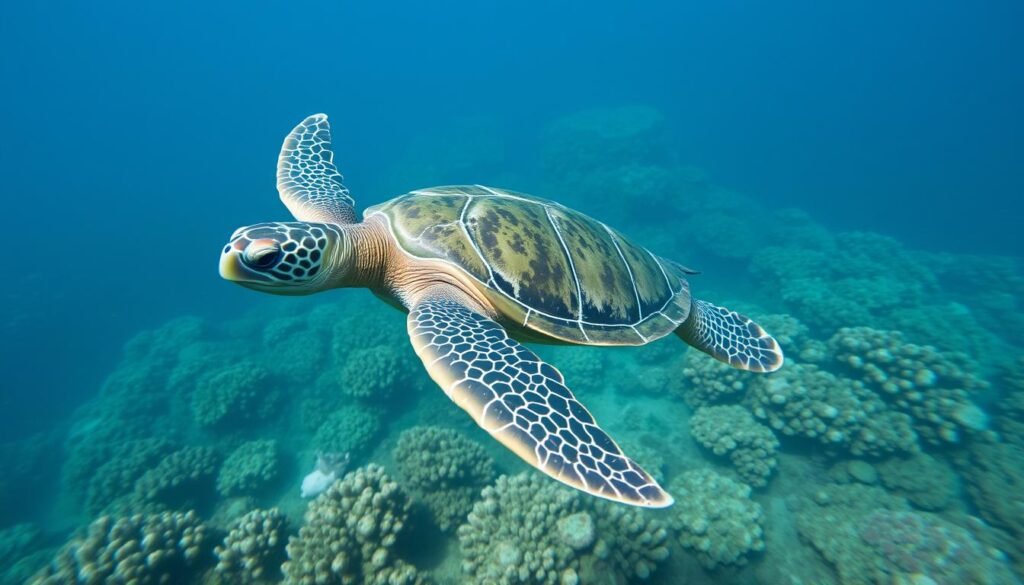
3. Turtle Islands Wildlife Sanctuary, Tawi-Tawi
This remote sanctuary comprises seven islands between the Philippines and Malaysia, serving as nesting grounds for endangered green and hawksbill turtles. It’s one of the few remaining major nesting sites for these species in Southeast Asia.
Ethical Practices:
- Strictly regulated visitor numbers to minimize disturbance
- Guided turtle watching with trained conservation officers
- No artificial lights during nesting season
- Participation in conservation activities like nest monitoring
- Community-based tourism supporting local livelihoods
While challenging to reach, this destination offers a truly authentic experience witnessing the nesting and hatching process of sea turtles. The best time to visit is during the peak nesting season from June to November.
Been to one of these amazing destinations?
Share your ethical wildlife encounter story and inspire other travelers to make responsible choices.
Debunking Common Myths About Wildlife Tourism
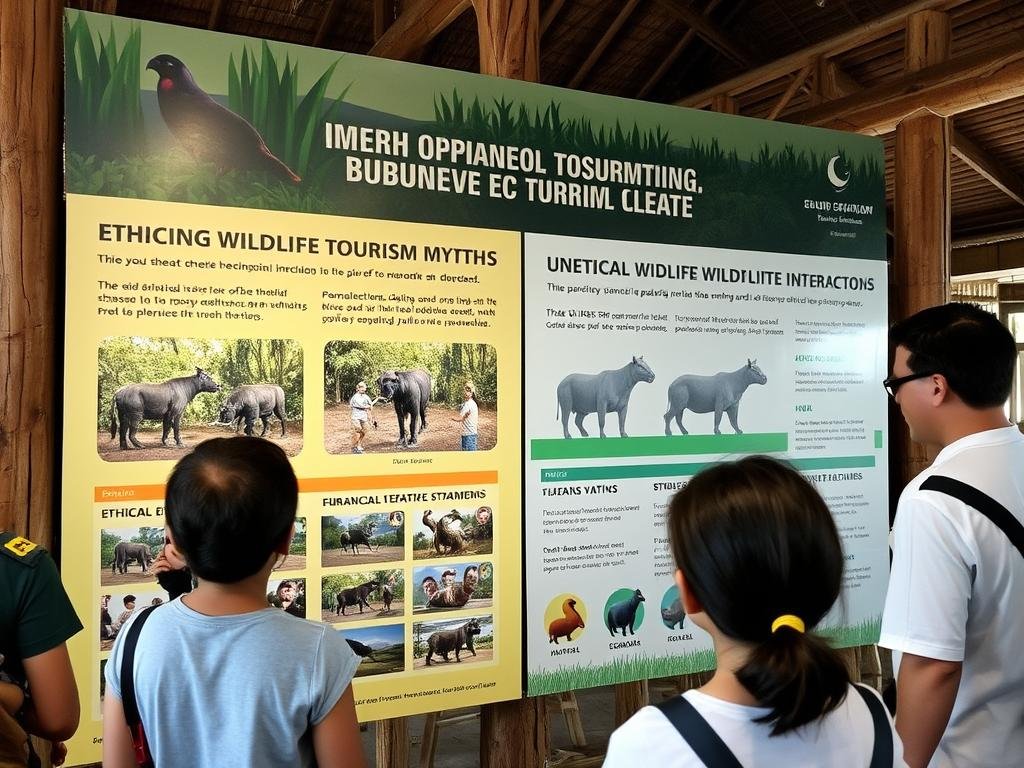
Education is key to transforming wildlife tourism practices
Misinformation can lead even well-intentioned travelers to make harmful choices. Let’s examine three common myths about wildlife tourism in the Philippines:
Myth #1: “Taking selfies with wildlife is harmless”
Reality: Close-proximity selfies often require animals to be restrained, sedated, or habituated to human contact—all harmful practices. Even with seemingly docile animals, the pursuit of the perfect photo can cause significant stress.
Ethical Alternative: Take photos from a respectful distance using a zoom lens, or photograph the animal in its natural environment without making yourself the focus. These images often tell a more powerful conservation story anyway.
In the Philippines, particularly concerning are “selfie opportunities” with captive Philippine eagles, tarsiers, or marine wildlife. These endangered species are especially sensitive to human disturbance.
Myth #2: “Feeding wild animals helps them survive”
Reality: Feeding wildlife disrupts natural behaviors, creates dangerous dependencies, and often leads to poor nutrition. It can also increase aggression toward humans and spread disease.
Ethical Alternative: Observe animals finding their natural food sources. If you want to support wildlife, contribute to habitat conservation efforts instead.
In places like Palawan and Bohol, feeding monkeys, birds, and marine life has created problematic behavior changes. Some animals now approach boats or tourists expecting food, putting them at risk of boat strikes or consuming harmful items.
Myth #3: “Animals in tourist attractions are well cared for”
Reality: Many wildlife attractions prioritize profit over animal welfare. Behind the scenes, animals often face poor living conditions, inappropriate diets, and physical or psychological stress.
Ethical Alternative: Support genuine sanctuaries and conservation centers that prioritize animal welfare and natural behavior. These facilities typically limit visitor interactions and focus on education.
In the Philippines, look for sanctuaries accredited by reputable conservation organizations. True sanctuaries will prioritize the animals’ needs over visitor experiences and be transparent about their practices.
Warning: Be wary of places using terms like “eco,” “sanctuary,” or “rescue” without proper accreditation. Research facilities before visiting by checking reviews from conservation organizations rather than just tourist ratings.
By understanding these myths, you can make more informed choices that truly support wildlife conservation during your sustainable travel in the Philippines. Remember that ethical wildlife tourism should always prioritize the animals’ welfare over human entertainment or convenience.
Responsible Wildlife Photography Tips
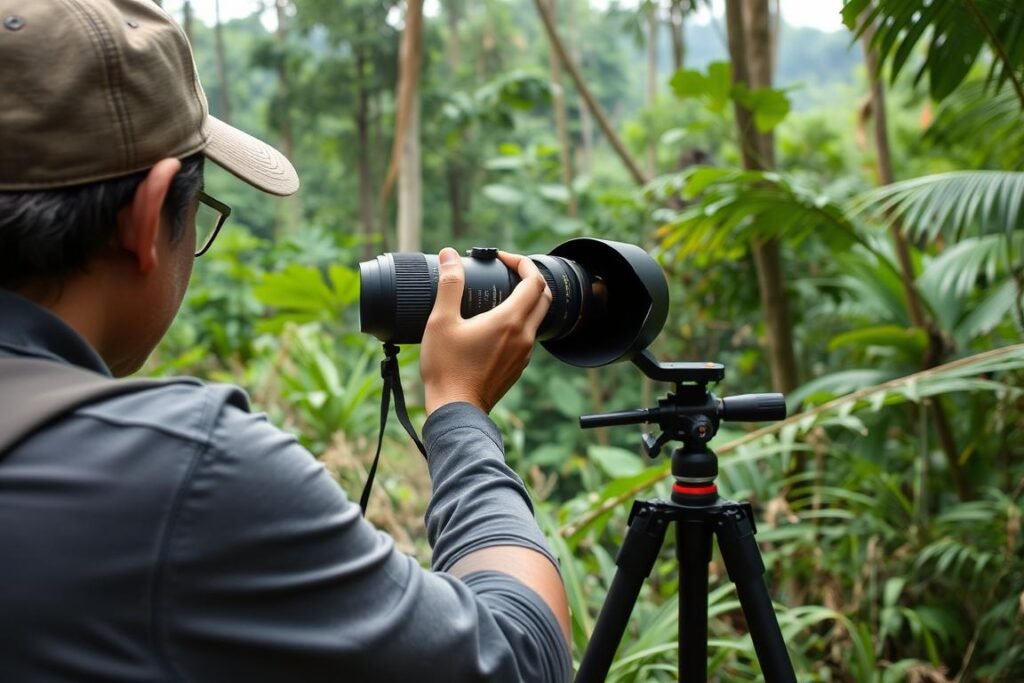
Using proper equipment allows for stunning photos without disturbing wildlife
Photography is often a primary motivation for wildlife encounters, but it can be done in ways that respect animal welfare. Follow these guidelines to capture memorable images ethically:
Equipment Recommendations
- Use telephoto lenses (200mm or longer) for close-up shots from a distance
- Bring binoculars for better viewing without approaching animals
- Consider a camera with good low-light performance to avoid using flash
- Use a tripod or monopod for stability with longer lenses
- Pack a rain cover for your equipment during Philippines‘ rainy season
Ethical Photography Practices
- Never use flash around wildlife, especially nocturnal species
- Photograph animals engaged in natural behaviors
- Be patient and wait for opportunities rather than forcing them
- Stay on designated paths and viewing platforms
- Keep voices low and movements minimal while shooting
Remember that the story behind your image matters. A slightly less perfect photo taken ethically is far more valuable than a perfect shot that caused distress to an animal. Share the conservation story along with your images to inspire others to practice ethical wildlife photography.
“The best wildlife photograph tells a conservation story, not just a beautiful image. When sharing your photos, include information about the species’ conservation status and the ethical practices you followed to capture the image.”
By following these guidelines, you’ll not only create meaningful images but also contribute to a culture of respect for wildlife among fellow travelers and photographers.
How Your Travel Choices Support Conservation
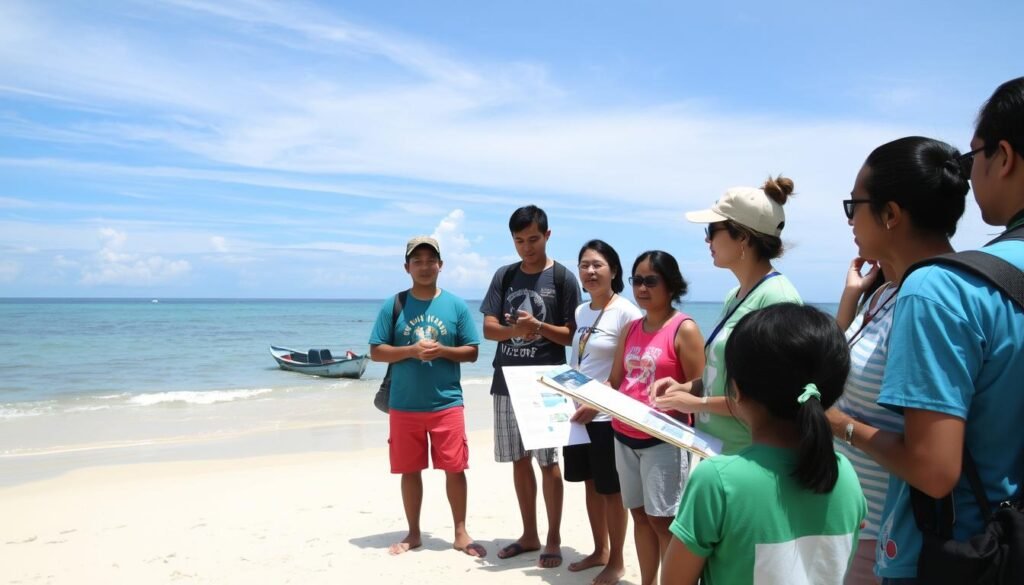
Community-based tourism directly supports local conservation initiatives
Your choices as a traveler have ripple effects that extend far beyond your visit. Here’s how ethical wildlife tourism supports conservation in the Philippines:
Economic Incentives
When communities earn sustainable livelihoods from wildlife tourism, they have direct incentives to protect natural habitats. In places like Donsol, former fishermen now work as whale shark guides, earning more while protecting the species they once hunted.
Funding Conservation
Many ethical wildlife experiences in the Philippines allocate a portion of fees directly to conservation projects. These funds support anti-poaching efforts, habitat restoration, research, and community education programs essential for long-term species protection.
Raising Awareness
Ethical wildlife encounters educate both visitors and locals about the importance of biodiversity. This growing awareness builds political and social support for conservation policies and practices that protect the Philippines’ natural heritage.
Questions to Ask Before Booking Wildlife Experiences
| Question | What to Look For | Red Flags |
| Does the experience involve direct contact with wildlife? | Observation-only experiences from appropriate distances | Opportunities to touch, feed, or take selfies with wild animals |
| How does the operation contribute to conservation? | Specific conservation projects with transparent funding | Vague claims without verifiable conservation work |
| Are local communities involved? | Local guides, community-owned operations, fair employment | Operations that exclude or exploit local communities |
| What is the group size? | Small groups with minimal environmental impact | Large crowds that overwhelm wildlife or habitats |
| Does the operator have conservation partnerships? | Affiliations with reputable conservation organizations | No partnerships or associations with questionable groups |
By asking these questions and choosing operators that prioritize conservation and community benefits, you ensure your tourism dollars support rather than undermine wildlife protection efforts in the Philippines.
Inspired by conservation success stories?
Read about travelers who’ve witnessed the positive impact of ethical wildlife tourism in the Philippines.
Eco-Friendly Packing Essentials

Packing sustainably reduces your environmental footprint while traveling
What you bring on your wildlife adventures can significantly impact your environmental footprint. Here are essential items for ethical and sustainable travel in the Philippines:
Wildlife Viewing Essentials
- Binoculars: Observe wildlife from a distance without disturbing them
- Camera with zoom lens: Capture close-up photos while maintaining distance
- Field guides: Learn about local species to enhance your experience
- Earth-toned clothing: Blend in with natural surroundings
- Quiet, non-squeaky shoes: Move silently in wildlife areas
Eco-Friendly Basics
- Reef-safe sunscreen: Protect marine ecosystems while protecting your skin
- Reusable water bottle: Reduce plastic waste while staying hydrated
- Bamboo/metal utensils: Avoid single-use plastic cutlery
- Reusable shopping bag: For souvenirs and market purchases
- Natural insect repellent: DEET-free options reduce chemical impact
Reef-Safe Sunscreen Tip: Look for mineral-based sunscreens with non-nano zinc oxide or titanium dioxide as the active ingredients. Avoid oxybenzone, octinoxate, and other chemical filters harmful to coral reefs. This is especially important when visiting marine sanctuaries in Palawan, Cebu, and other coastal destinations.
By packing thoughtfully, you minimize your environmental impact while maximizing your wildlife viewing opportunities. These items not only support your ethical wildlife encounters but also demonstrate respect for the natural environments you’re visiting.
Embracing Ethical Wildlife Tourism: Your Impact Matters
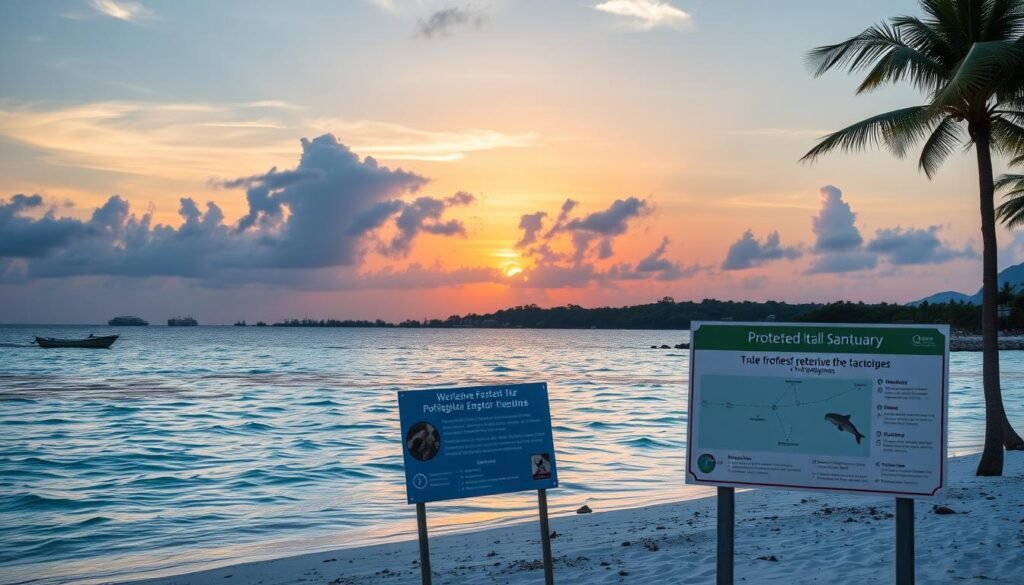
The future of Philippine wildlife depends on sustainable tourism practices
As we’ve explored throughout this guide, ethical wildlife tourism is not just about what you shouldn’t do—it’s about actively contributing to conservation through thoughtful choices. The Philippines’ extraordinary biodiversity faces significant challenges, but sustainable travel practices offer powerful solutions.
By choosing ethical wildlife encounters, you become part of a growing movement that values conservation over exploitation. Your decisions create ripple effects that support local communities, fund protection efforts, and inspire others to travel responsibly.
Remember that ethical wildlife tourism often provides more authentic, meaningful experiences. There’s nothing quite like witnessing animals behaving naturally in their native habitats—a far more rewarding experience than contrived interactions that compromise animal welfare.
As you plan your sustainable travel in the Philippines, carry these principles with you. Ask questions, make informed choices, and don’t be afraid to speak up when you witness practices that harm wildlife. Your voice as a traveler carries significant influence.
“In the end, we will conserve only what we love; we will love only what we understand; and we will understand only what we are taught.”
We invite you to share your own ethical wildlife encounters in the Philippines. Your stories inspire others and contribute to a growing body of knowledge about responsible travel practices. Together, we can ensure that wildlife tourism becomes a powerful force for conservation in the Philippines.
Have you experienced ethical wildlife tourism in the Philippines?
Share your story to inspire other travelers and contribute to our community of responsible tourists.















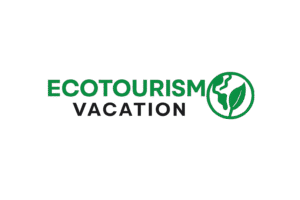
Leave a Reply